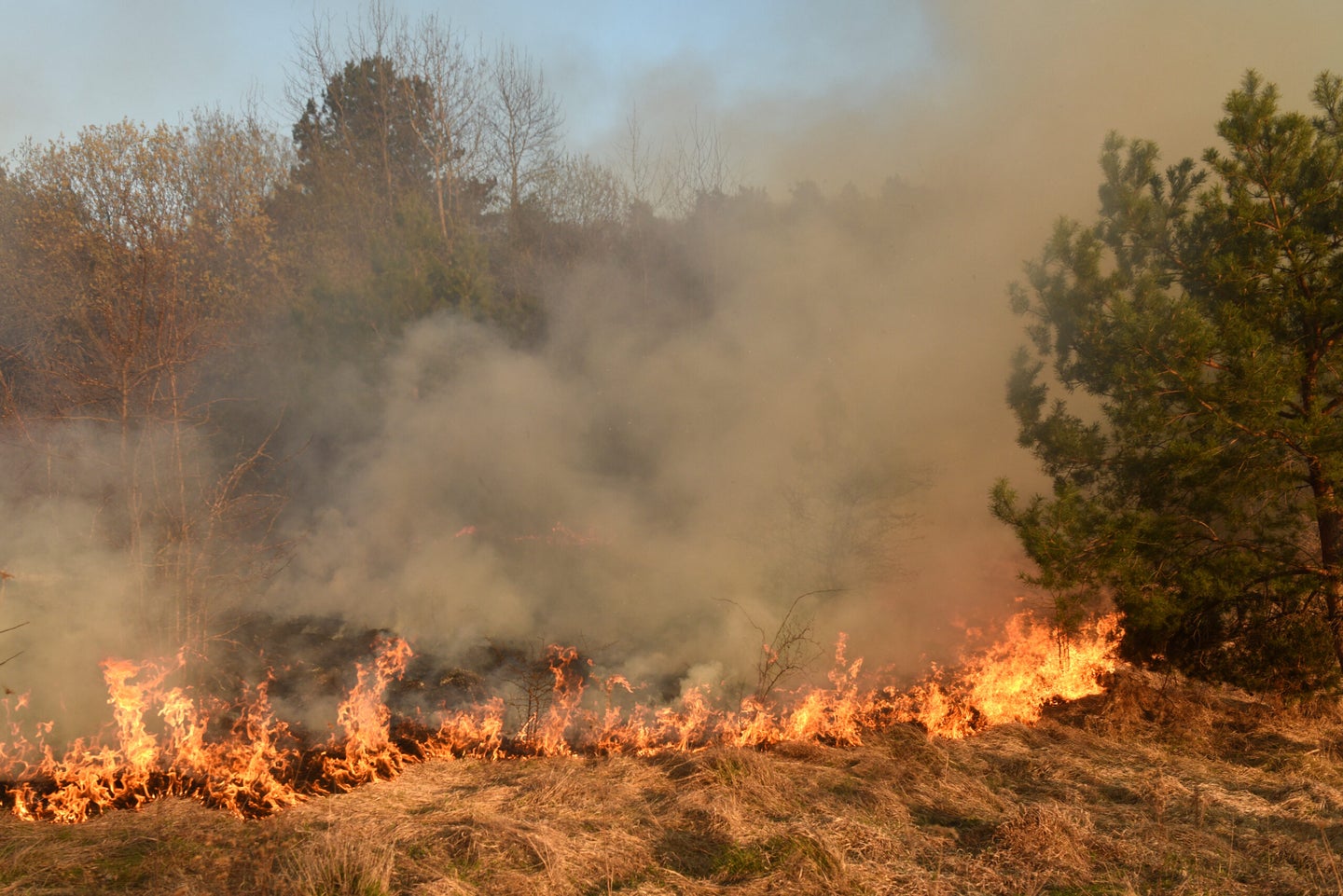Wildfire smoke is particularly bad for you—here’s why
Smoke from so-called 'prescribed burns' is less detrimental than smoke from wildfires.

On an average day, the majority of air pollution in the United States comes from cars and powerplants. However, when wildfires start, they have an outsized impact on the quality of the nearby air—during wildfire season in the west, if an area has air quality that’s worse than regulatory standards, around 70 percent of that pollution is from fires.
Wildfires, then, can be a major factor behind the health effects of bad air quality. But when it comes to health, not all fires are created equal, according to a preliminary study published this week—which found that smoke from prescribed burns affects children’s health less than smoke from wildfires.
Prescribed fires are ones lit intentionally under careful conditions, with the goal of reducing the fuel that could spark and prolong wildfires in the future, says Crystal Kolden, an associate professor in the forest, rangeland, and fire sciences department at the University of Idaho. “It’s really hard, for a single event, to say this wildfire wouldn’t have happened because of more prescribed burns,” she says. “But when we look on aggregate, places with prescribed fires have less wildfire, and less destructive wildfire.”
The new study, published in the European Journal of Allergy and Clinical Immunology, looked at the effect of wildfire and prescribed burns on children living in Fresno, California. The study compared blood samples from three groups of kids: one set of 32 children exposed to smoke from a prescribed fire in March 2015, another 36 children exposed to a wildfire in September 2015, and a control group of 18 children in the San Francisco bay area who were not exposed to any smoke.
Children in the wildfire group had more exposure to air pollution overall than the prescribed burns group, and were more likely to have wheezing episodes or have their asthma exacerbated.
Analysis of blood samples, taken from the children within three months of their fire exposure, showed that those in the wildfire group had lower levels of certain immune cells, and reduced activity of the FoxP3 gene (which has also been seen in other studies of wildfires). Such changes in that gene are associated with dysfunction in the immune system, which may be a reason why air pollution and wildfire smoke are associated with increased rates of asthma, says study author Mary Prunicki, instructor of medicine at Stanford University. The affected immune cells are also associated with cardiovascular disease.
“We think it’s because, by the nature of a prescribed burn, people get less pollution exposure,” Prunicki says. Prescribed fires take place when winds are low, and are constantly contained, which means less smoke probably ends up in areas where people live, she says.
Prescribed burns also give people the opportunity to take precautions in advance, while a wildfire does not, Kolden says. “If you have asthma and know there will be a prescribed fire, you might have the ability to go out and get a filtration system or seal up your house. You have options, you can plan for those things,” she says. “You can’t do that with wildfire. You’re just inundated, until the wind changes or the fire is out.” Wildfires also last longer, she says—prescribed fires are usually only a few days, which reduces the time people are exposed to bad air.
Despite their benefits, in the western United States, particularly in California, prescribed fires aren’t done as frequently as they should be to curb wildfire risk, Kolden found in an analysis published this week. That might be partially because of the air quality regulations in places like California: If prescribed burning pushes the concentrations of air pollutants like particulate matter over the regulatory threshold, they have to be shut down. “We know if we do enough prescribed burning, it reduces the potential for really bad air quality from wildfire, but that’s not how things are regulated. It’s event by event, not looking at the trade off,” she says.
People in the western United States are also more resistant to prescribed fires, Kolden says. Though it’s preliminary, Prunicki says she hopes their study can help give the public more information about these fires. “It shows that maybe this is actually going to be less detrimental,” she says.
Only about 5 percent of research studies on prescribed burns addressed their public health implications, according to Kolden’s analysis. “With prescribed fires, wildfires, and air quality, we don’t have a lot of research understanding those health impacts,” she says. Building that body of research will be key for developing health-focused fire and prescribed fire practices, because what works in one place might not work in another.
In Sydney, Australia, for example, there are more health effects from prescribed burns. “It’s because of the nature of Sydney, and how it sits in a bowl,” Kolden says. Future research needs to examine the differences between places and how they’re affected by both prescribed burns and wildfires. “Figuring out where we can do prescribed fires that won’t have as much of a negative health impact is critical to increasing their use and reducing wildfire danger,” she says.